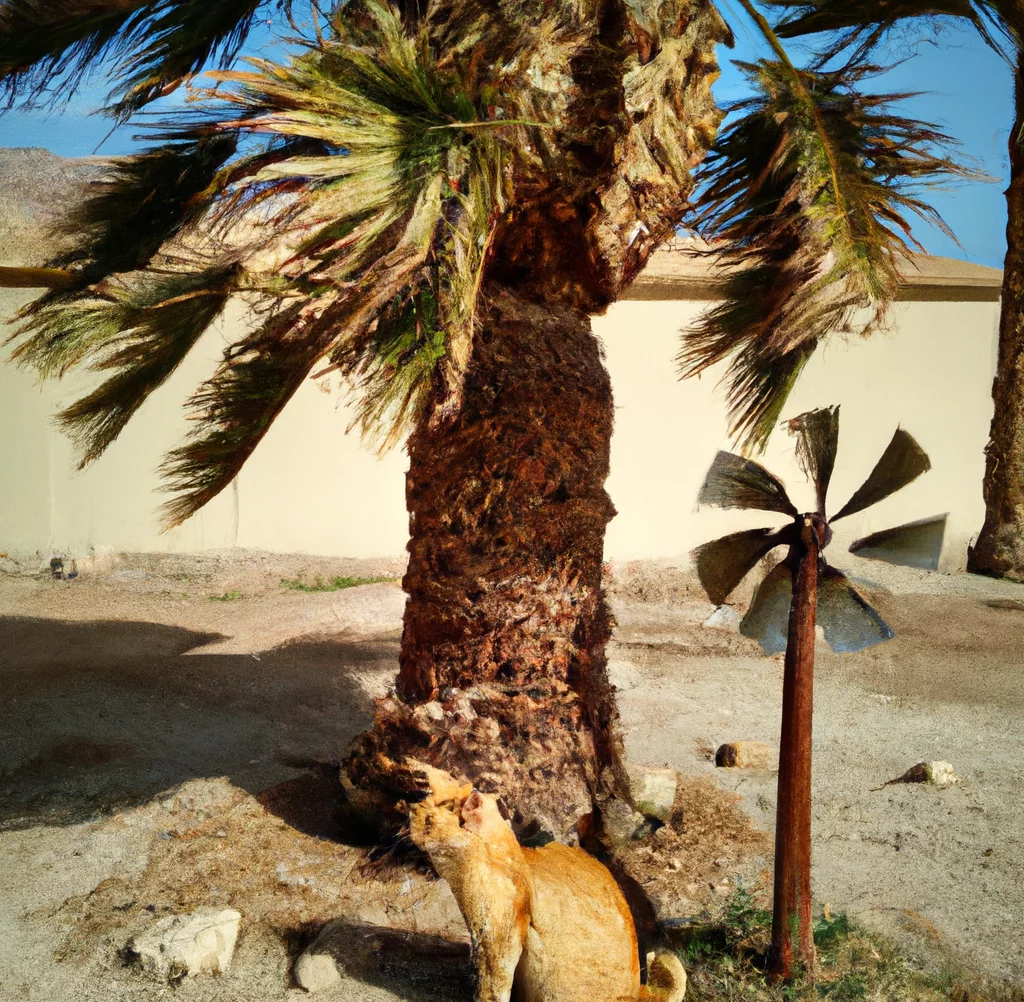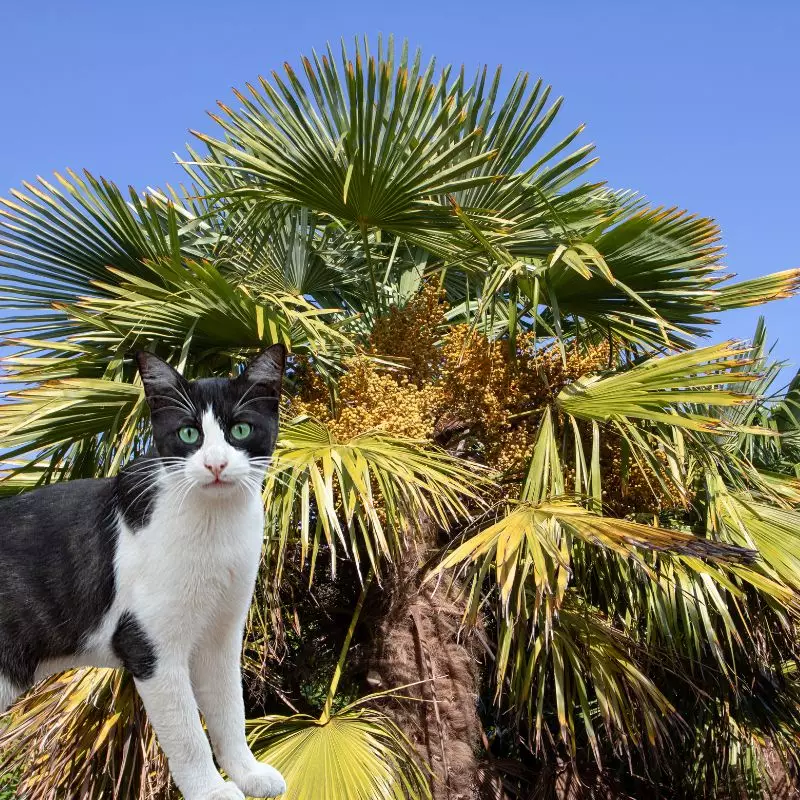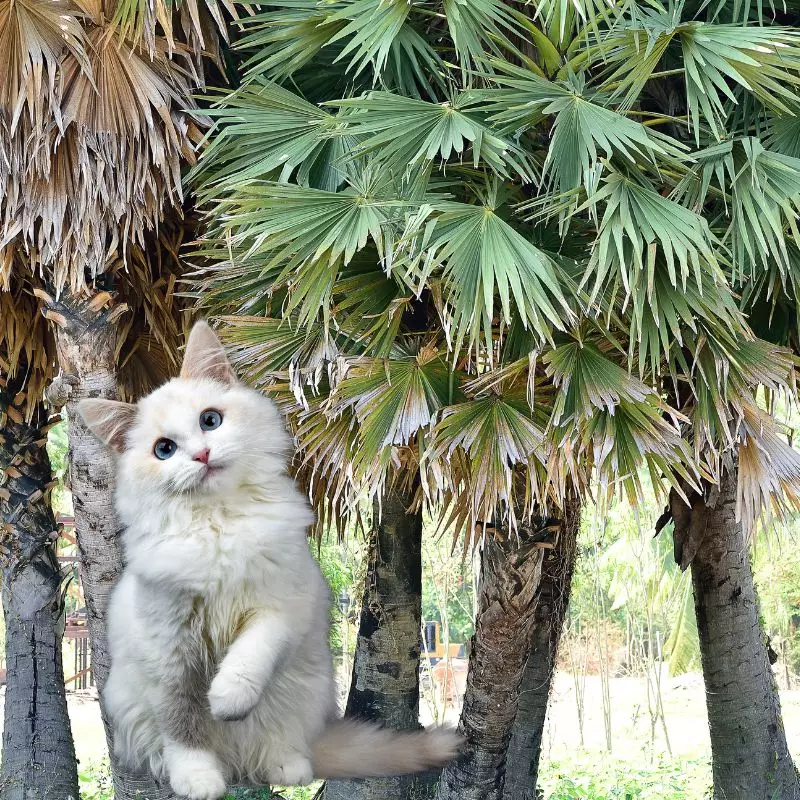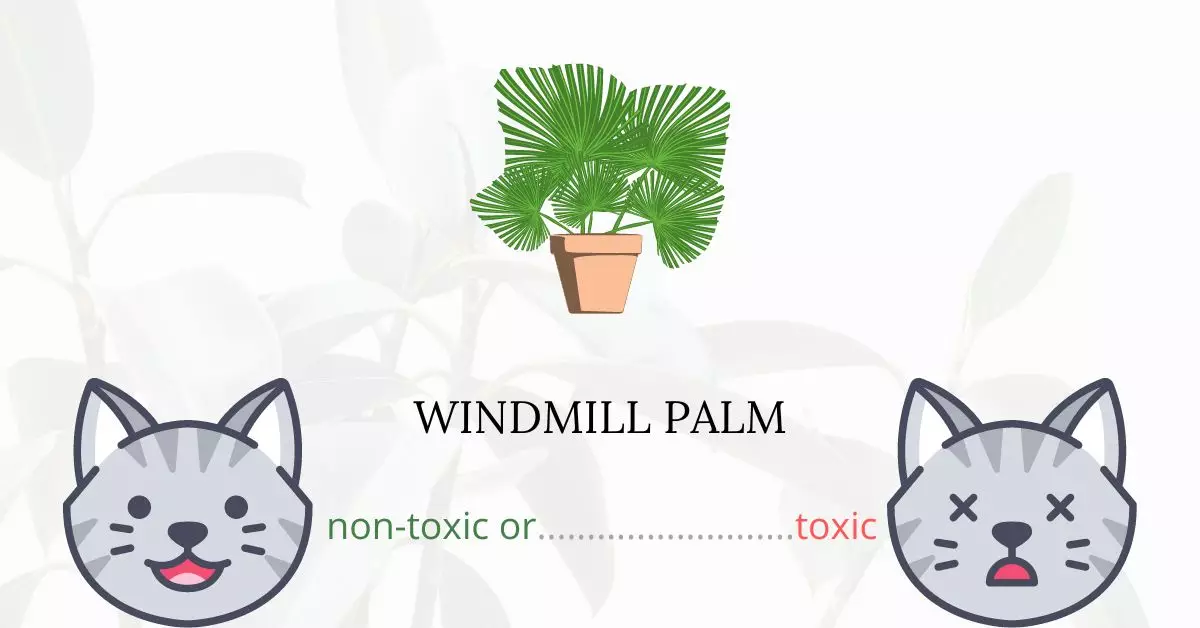Windmill palm is not toxic for cats. This palm species has been confirmed as non-toxic on the list provided by the American Society for the Prevention of Cruelty to Animals (ASPCA). Therefore, it is safe for our feline friends to be around this plant.
This article was meticulously crafted in collaboration with a team of experienced DVMs (doctors of veterinary medicine). Their invaluable insights enable us to provide accurate and current information on the potential risks associated with various plants, specifically the Windmill Palm in this instance. In addition to consulting with our veterinary experts, we have extensively researched high-authority websites such as ASPCA and PetMD to ensure comprehensive understanding on every plant’s potential effects on cats.
Can Cats Eat Windmill Palm?

It wouldn’t harm your cat if she has eaten a small portion of a windmill palm. A tiny bite of the leaf or stem will not have adverse effects on cats, however, in case too much eating of plants will cause cats to have an upset stomach.
Since cats are carnivorous animals, they cannot digest plant particles. As a result, they experience indigestion and gastrointestinal problems after eating a lot of plants. They will typically show symptoms of vomiting and diarrhea when they have an upset stomach. The said symptoms will gradually subside as soon as the plant matter has been eliminated from the cat’s body.
Using fertilizers and pesticides can also affect our fur babies. Some products may contain poisonous substances that can be dangerous for cats when inhaled or ingested. Make sure to use natural products on your plants to keep your kitties safe.
What is Windmill Palm?

The windmill palm is native to China’s subtropical and temperate mountain forests. It can grow to be 20′ to 40′ tall in the wild, and sometimes even taller. In other places, it is usually around 10′ tall.
It works well as a specimen plant or in small groups. It can be used to frame an entryway or a garden path.
It has a single trunk that is shaggy and hairy with dried petioles from shed leaves. Leaf fibers are frequently used in weaving. The leaves spiraling outward from the plant’s top resemble a windmill, hence the common name. In colder climates, it can be cultivated in large containers and overwintered indoors.
The windmill palm has been cultivated for thousands of years in China and Japan for its coarse but very strong leaf sheath fiber, which is used to make rope, sacks, and other coarse cloth. This trunking palm is also grown in gardens and parks all over the world in warm temperate and subtropical climates. It is highly valued by palm enthusiasts, landscape designers, and gardeners due to its tolerance of cool summers and cold winters.
Keeping Cats Away From Windmill Palm

Your cats may get attracted to the leaves of a windmill palm. They may enjoy the movements of its leaves and eventually try to nibble on them or mess with them.
You can deter your cat simply by making your plants unappealing to it. Making a vinegar and water solution is a simple way to accomplish this. You can also substitute citrus juice for vinegar. The smell will repel your cat as they dislike the odor of vinegar and citrus fruits.
You can also use a Motion-Activated Cat Spray, which is an infrared sensor-equipped device. When your cat approaches the sensor, it emits a harmless, odorless spray that annoys your cat away from the plant, teaching it not to come near again.
Plants to Avoid For Your Cats
If you are a cat owner and unsure if the plants growing in your yard are harmful to your cats, check out this list of toxic plants for cats. You can also check our list of non-toxic plants for cats.





